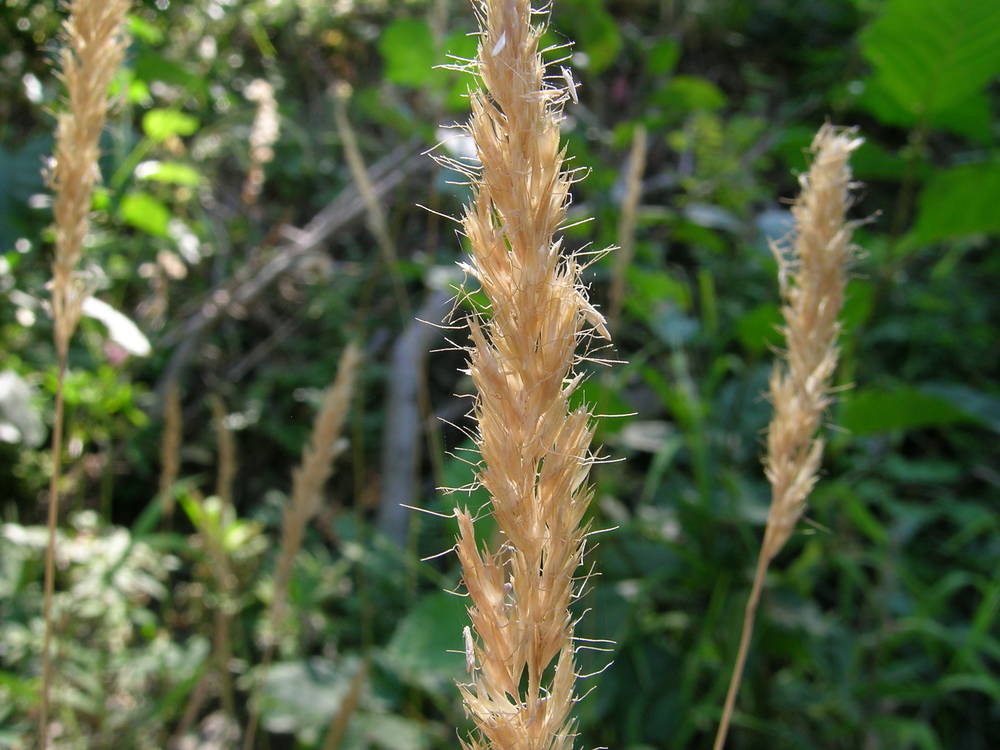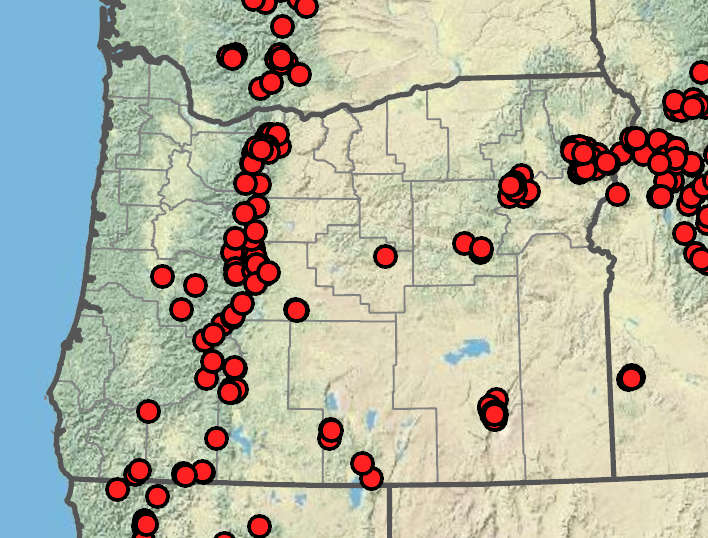Trisetum spicatum
narrow false oat, spike false oat, spike trisetum
mostly basal or evenly distributed;
ligules 0.5–4 mm;
blades 1–5 mm wide.
dense; spike-like, often interrupted basally; (5)20–30(50) × (0.5)1– 2.5(5)cm, green to purplish or tawny, usually shiny and silvery;
branches less than 2(3.5) mm;
spikelet-bearing to the base.
5–7.5 mm, 2(3) florets.
lanceolate; smooth or sometimes sparsely scabrous or pilose;
margins widely scarious;
tips acute to acuminate or apiculate;
lower glumes 3–4(5.5) mm;
upper glumes 4–7 mm; as long as or longer than the lowest florets; less than twice as wide as the lower glumes.
glabrous.
narrowly to broadly lanceolate, 3–6(7) mm, glabrous, minutely scabrous, or pilose;
tips bifid;
teeth usually less than 1 mm, awned; awns bent and basally twisted, 3–8 mm, arising in the upper 33% of the lemmas.
0.7–1.4 mm.
=14, 28, 42.
Trisetum spicatum
Moist montane meadows, forests, and rocky slopes. 900– 3100m. BR, BW, Casc, ECas, Sisk. CA, ID, NV, WA; throughout North America except midwestern and southern US; South America; Eurasia. Native.
Trisetum spicatum is recognized by its dense, shiny, tan inflorescence with divergent awns. The shiny inflorescence of Koeleria macrantha is narrower and lacks awns.
Barbara Wilson, Richard Brainerd, Nick Otting
- Local floras:
BC,
CA,
OR,
WA
- Local Web sites:
CalFlora,
CalPhotos,
Flora NW,
PNW Herbaria
WildflowerSearch
iNaturalist (observations)
USDA Plants Database
- LBJ Wildflower Center
- SEINet
- Plants of the World Online
- Encyclopedia of Life
- Wikipedia
- Google Image Search



